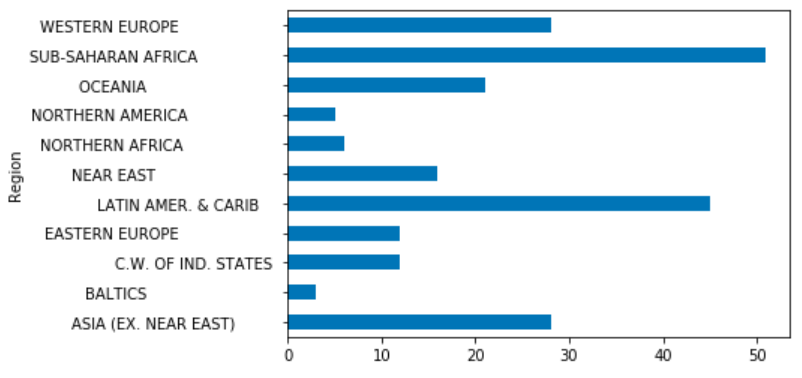GROUPBY IN PANDAS
In this tutorial, you will learn about the groupby function in Pandas and how to create subsets of your existing dataframe by classifying the information that you need.
What is Groupby in Pandas?
Pandas is an awesome tool for classifying data into groups through the groupby() method. We can distribute the objects in pandas on any of their axis. In short, groupby means to analyze a pandas Series by some category.
In short, if you have repeated categories in your dataset, then you can create groups in order to classify your data into sub groups. Remember, it won’t be wise to perform groupby method on unique values. Let’s look at the syntax of groupby to understand it in more depth:
DataFrame.groupby(self, by=None, axis=0, level=None, as_index=True, sort=True, group_keys=True, squeeze=False, observed=False, **kwargs)
We will import a csv file by using the read_csv method. You can find the csv file here
import pandas as pd
countries = pd.read_csv('countries.csv')
countries.head()
Output:

Let’s say we want to group the dataframe by the region, so we can simply use the groupby() method:
countries.groupby('Region')
Output:
When we apply the groupby function, a pandas object is returned. So in order to work around that, we need to store the grouped dataframe in a variable:
region_groupby = countries.groupby('Region')
region_groupby
Output:
It still is returned as an object, but now our pandas is stored inside a variable and we can call that variable with different methods as a grouped entity, so let’s look at the size of the grouped region dataframe:
region_groupby.size()
Output:
Region ASIA (EX. NEAR EAST) 28 BALTICS 3 C.W. OF IND. STATES 12 EASTERN EUROPE 12 LATIN AMER. & CARIB 45 NEAR EAST 16 NORTHERN AFRICA 6 NORTHERN AMERICA 5 OCEANIA 21 SUB-SAHARAN AFRICA 51 WESTERN EUROPE 28 dtype: int64
Let’s take out the population sum of distributed region area:
region_groupby.Population.sum()
Output:
Region ASIA (EX. NEAR EAST) 3687982236 BALTICS 7184974 C.W. OF IND. STATES 280081548 EASTERN EUROPE 119914717 LATIN AMER. & CARIB 561824599 NEAR EAST 195068377 NORTHERN AFRICA 161407133 NORTHERN AMERICA 331672307 OCEANIA 33131662 SUB-SAHARAN AFRICA 749437000 WESTERN EUROPE 396339998 Name: Population, dtype: int64
You can apply the aggregation function on the population over the region category:
region_groupby.Population.agg(['count','sum','min','max'])
Output:

Groupby in Pandas: Plotting with Matplotlib
You can create a visual display as well to make your analysis look more meaningful by importing matplotlib library. For example, you want to know the number of Countries present in each Region.
import matplotlib.pyplot as plt
df.groupby('Region')['Country'].count()
Output:
Region ASIA (EX. NEAR EAST) 28 BALTICS 3 C.W. OF IND. STATES 12 EASTERN EUROPE 12 LATIN AMER. & CARIB 45 NEAR EAST 16 NORTHERN AFRICA 6 NORTHERN AMERICA 5 OCEANIA 21 SUB-SAHARAN AFRICA 51 WESTERN EUROPE 28 Name: Country, dtype: int64
Let’s plot the result now:
df.groupby('Region')['Country'].count().plot(kind="barh")
plt.show()
Output:





